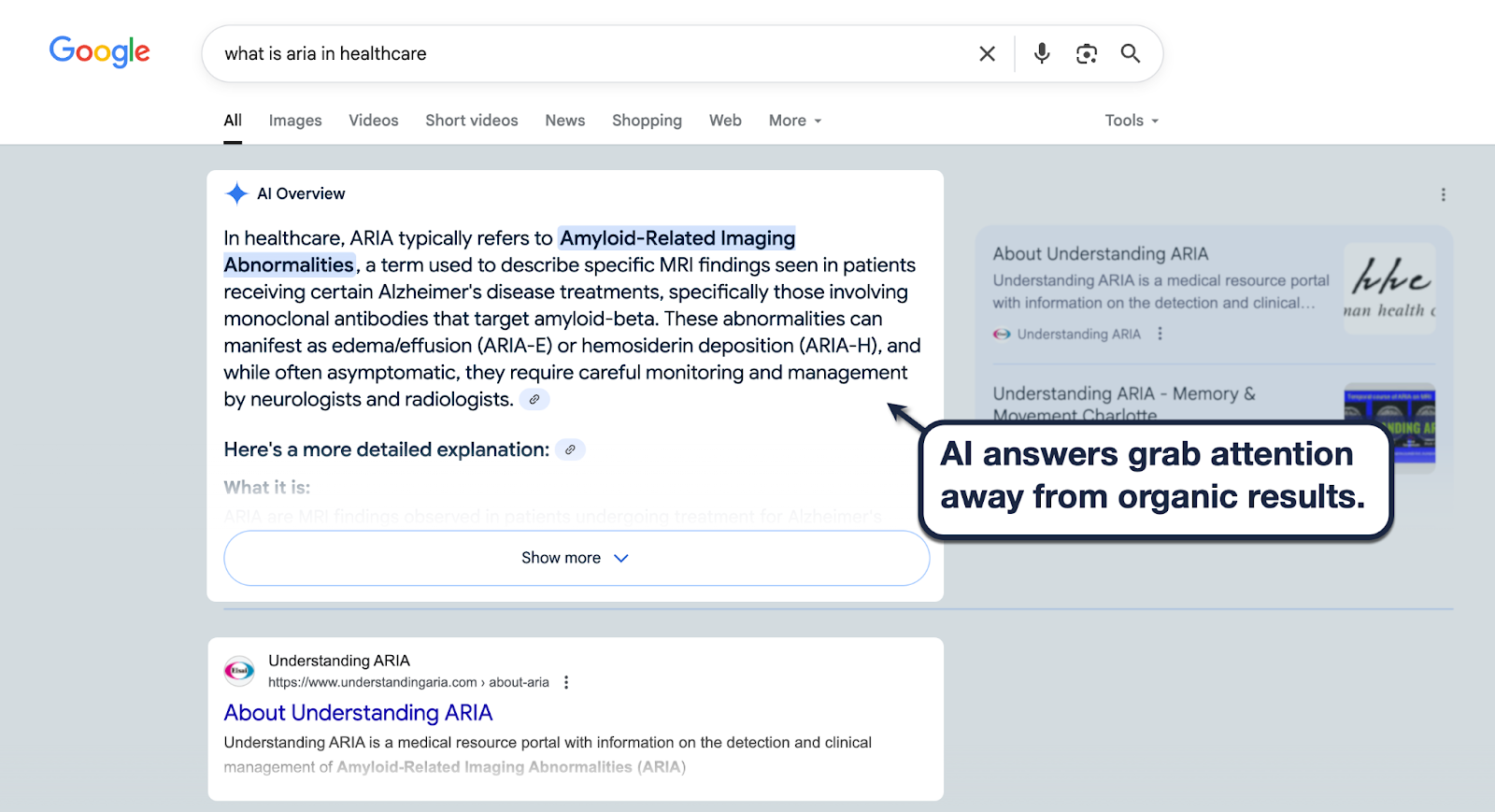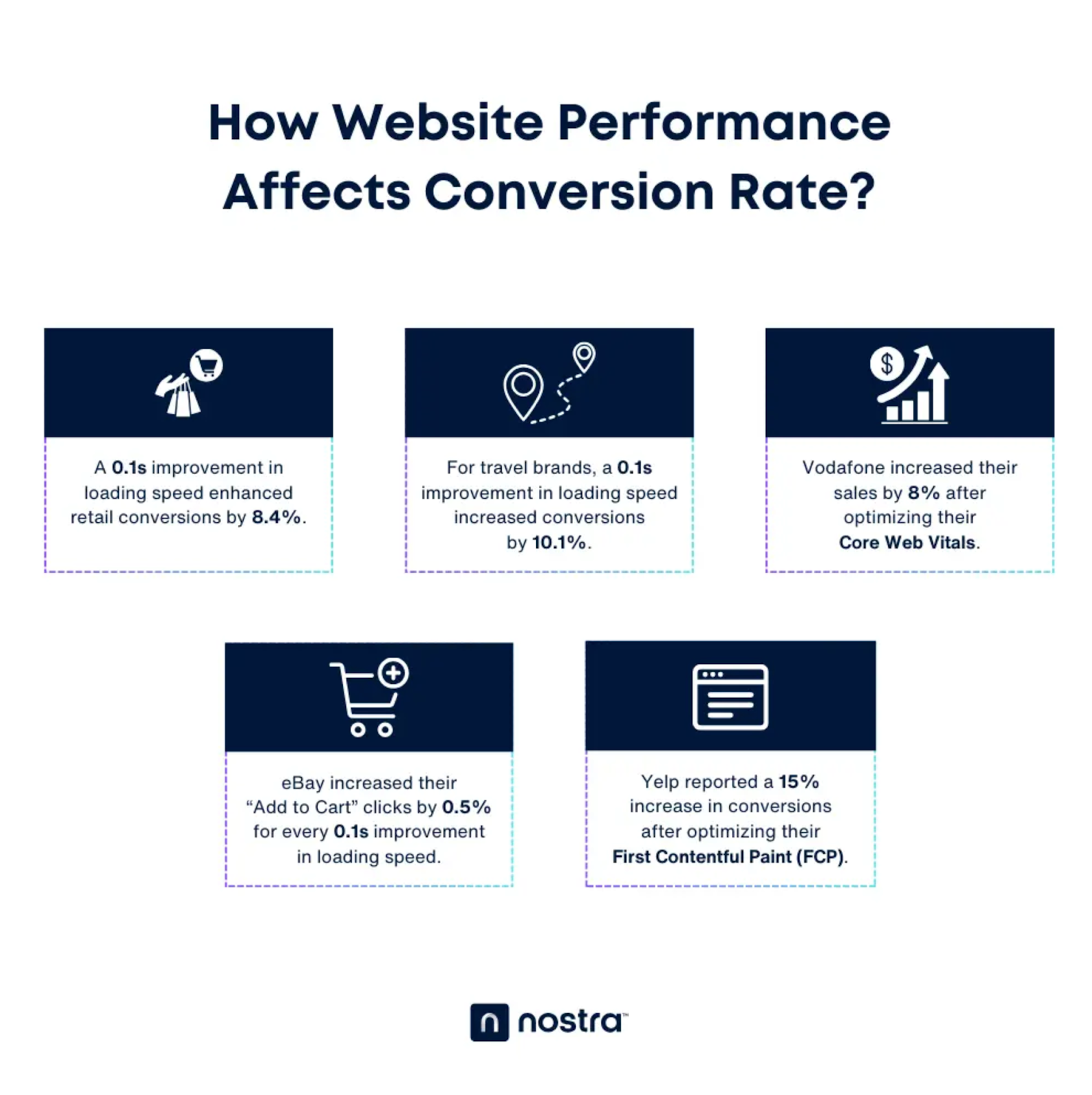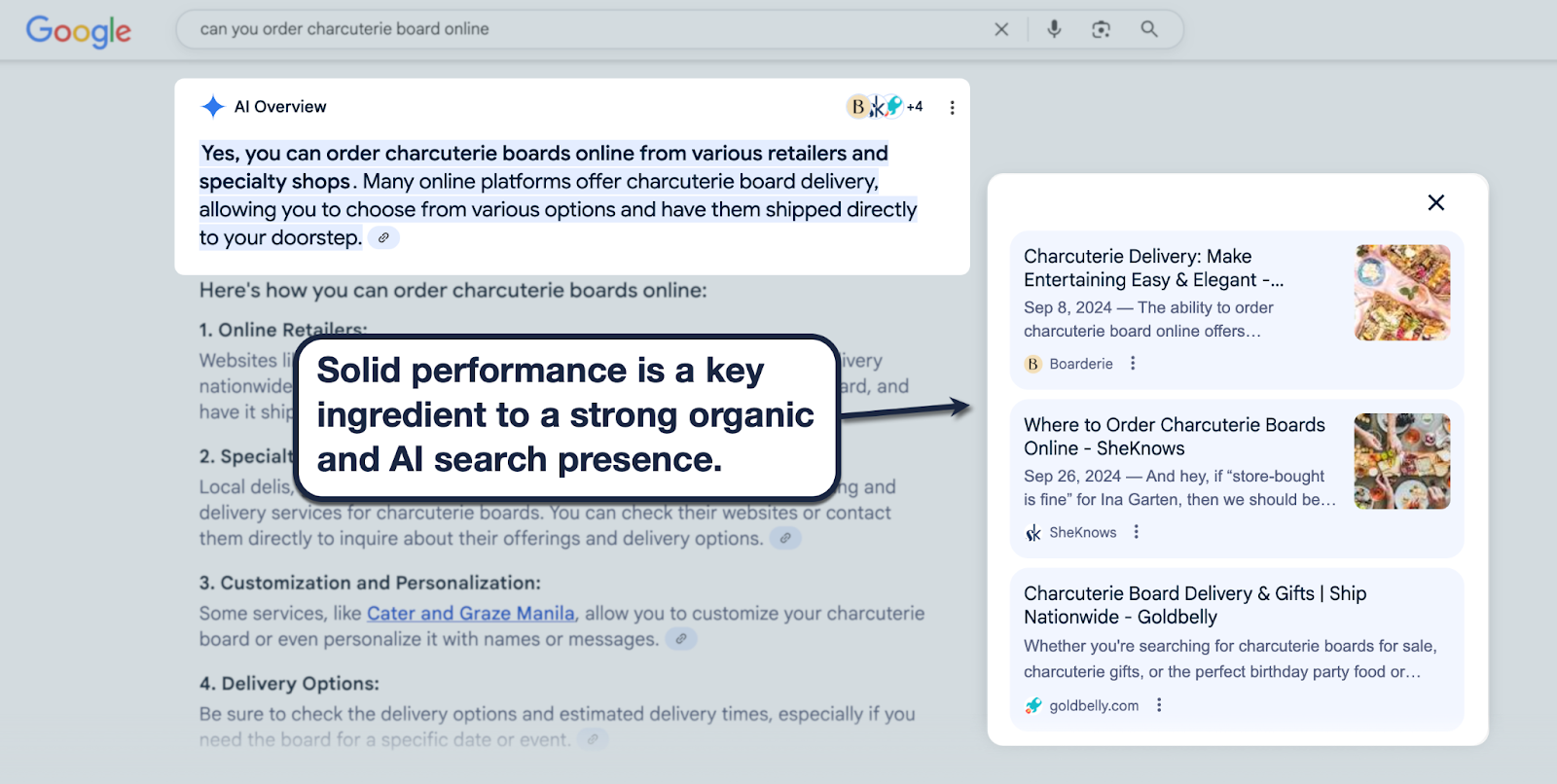Answer Engine Optimization: Does Speed Matter?
Search engines aren't what they used to be — and if you want your brand to stay visible, you need to optimize not just for rankings, but for answers.
In case you haven't noticed, a good chunk of online search queries in Google now return AI-generated answers. These are conveniently placed at the very top of the results page, making them virtually impossible to miss. And of course, many users are now starting their journey LLMs and other answer engines like ChatGPT, Perplexity, and many others.
While AI answers are a net positive for users, they have definitely generated a great deal of unrest in the Search Engine Optimization (SEO) and marketing community.
After all, your goal as a business is to get users to visit your website. And with their queries answered by AI as soon as the search results load, there's very little incentive to click anywhere else.

Answer Engine Optimization (AEO) aims to address this problem.
In simple terms, AEO is the practice of optimizing your content's visibility in these AI-generated — AKA "zero-click" — search engine listings.
It doubles down on fundamental SEO concepts, like content quality, authority, and structured data.
The key question is, does website speed influence your ability to surface in AI-driven answers and other AI sources?
Spoiler alert: The answer is yes — and the impact is probably bigger than most brands realize.
In this post, we'll analyze the real impact of page speed on AEO and what you can do to take advantage.
But first, let's take a closer look at AEO.
What is Answer Engine Optimization (AEO)?
Just like SEO, the end goal of AEO is to make you more searchable for online users who need the information you provide. The main differences are the channels you're optimizing for and the optimization strategies you'll use.
To clarify, AEO puts more emphasis on:
- Structuring content for machines (not just humans) — A good part of AEO ensures your content can be picked up and analyzed by AI. This can be accomplished by instilling content with machine-readable data while maintaining the engagement factor for humans.
- Prioritizing concise, factual, and authoritative answers — Google's AI answers are meant to provide quick and digestible information from reputable sources. That's why part of SEO includes making sure to include straightforward and fluff-free writing, especially when discussing key points or questions.
- Optimizing for featured snippets — Done right, AEO not only improves your visibility in AI answers. It also increases your chances of being picked up for other featured snippets (i.e., Google 3-Pack), voice search, AI assistants, and other AI answer engines (e.g., ChatGPT and Perplexity).
Some other examples of answer engines or AI tools you can show up in are Bing Copilot, Amazon Alexa, and Grok. And with a comprehensive AEO strategy, all of these provide more opportunities for your website to get discovered online.
Remember, with the rise of AI tools, fewer and fewer users rely on organic search listings to research information online.
Statistics show that 13.14% of all search queries triggered AI answers in March 2025 — up by 6.49% just two months prior. Without adopting AEO in your marketing, it's only a matter of time before your brand gets completely overshadowed by competitors.
The Role of Site Performance in Traditional SEO
Where does site speed fit in the AEO equation?
First, you must understand the role of performance in traditional SEO.
In SEO, website performance is a crucial ranking factor, as confirmed by Google time and time again. That's because the user experience depends heavily on how fast, stable, and responsive your website is.
Google does a great job measuring the impact of performance on the user experience through the Core Web Vitals — the gold standard in website performance analytics.
Here's a quick overview of the Core Web Vitals metrics you should focus on:
- Largest Contentful Paint (LCP) — How fast does the largest page section or element load?
- Interaction to Next Paint (INP) — What is the longest delay between user input and a visual response?
- Cumulative Layout Shift (CLS) — What is the largest layout shift in terms of impact and distance?
Page speed is also underscored as a huge factor when Google rolled out mobile-first indexing, which prioritizes a website's mobile version when evaluating rankings.
Remember, a sluggish and unstable website causes a handful of problems that impact your rankings and overall profitability. We're talking about higher bounce rates, suboptimal crawl budgets (for search indexation and ranking), and reduced conversion rates.
Numerous studies, like this one published by Deloitte, reveal the impact that even a single millisecond can make on conversions.

TL;DR: Google rewards sites that deliver smooth and satisfying experiences to users — and website performance plays a big part in that.
This begs the question: Does website performance have the same impact on AEO?
How Website Speed Influences AEO in 2025
Below are the ways website speed affects AEO:
- Fast loading improves content crawlability, indexability, and "parsability" — Answer engines extract structured, clean information from your content. Fast pages support the crawling and indexation processes, making your content more parsable for Large Language Models (LLMs), which power these engines.
- Performance improves user engagement signals — Engagement metrics like time on page, scroll depth, and bounce rate affect your content's trustworthiness and rankings. Answer engines look at these metrics to gauge how directly and efficiently your content addresses user queries.
- Featured snippets, FAQs, and schema-based answers — Schema-based content and structured data rely on fast and reliable performance to load properly. If your website is slow and unreliable, it's difficult for both search and answer engines to crawl, analyze, and understand the context behind structured data.
- Crawl budget efficiency — In case you didn't know, all crawlers are limited to a specific budget or "crawl capacity." The faster your website, the higher the crawl capacity, directly influencing the amount of website content that search and crawl engines can index.
- Voice and AI assistants prioritize speed — AI answers are designed to bring relevant information as fast and efficiently as possible. That said, they also tend to favor information from fast-loading pages for smoother retrieval (while excluding slow and error-prone sources).
All in all, the importance of speed in AI and answer engine results boils down to user experience.
Don't forget that, in the first place, these tools are developed to provide quick and accurate answers. While answer engines may not observe or "see" speed directly, your content still gets evaluated and retrieved through fundamental crawling and indexation processes.
Ensuring your website is fast and accessible maximizes your content's chances of appearing in AI answers, increasing the visibility of your brand and — in turn — your potential online traffic.
Speed + Structure = Visibility in Answer Engines
Of course, speed isn't the be-all and end-all of AEO.
Website owners and developers also need to utilize structured data to ensure answer engines "understand" the meaning of your content.
Here are a few examples of how the combination of speed and structure is used in AEO:
- Rich snippets — Content with schema markups needs to load quickly and cleanly to enable answer engines to parse and display key information. Some schema markups used by answer engines are "Article," "FAQPage," "Product," "HowTo," and "Question."
- JSON-LD structured data — JavaScript Object Notation for Linked Data (JSON-LD) is a structured data format that allows answer engines to contextually understand and extract content from web pages. Seamless indexing and fast loading ensure your content is readily available whenever a search query triggers an AI overview.
- Mobile experiences and LLMs — Mobile content must also load fast and be properly formatted to be accessible for LLMs. This is especially important for mobile-specific versions of sites or web apps targeted at mobile users (i.e., through voice search).
Although page performance optimization is a multi-faceted strategy that can take weeks, there are a few strategies that can generate high-impact results in minutes.
With Nostra AI's Edge Delivery Engine, you can achieve near-instant loading speeds not just for users, but for search engine and answer engine crawlers as well. With the help of smart caching, performance-focused reverse proxy logic, and advanced crawler optimization, you can optimize your page for both organic and AI search results without the headaches.
How Nostra AI Supports AEO Through Speed Optimization
Here's a closer look at how Nostra AI sets you up for AEO success:
- AI-powered infrastructure — Using reverse proxy logic, Nostra AI allows you to deliver dynamic experiences, total security, and sub-second load times regardless of where users are coming from. The Edge Delivery Engine also uses AI-powered smart caching technology, automatically identifying which website elements must be fast-served to both crawlers and human users.
- Zero-dev lift — Achieving optimal website performance usually comes with a ton of code work or, in some cases, replatforming. Implementing Nostra AI lets you avoid this roadblock (and the initial crawling issues that come with it) since it can be deployed on any site in less than an hour.
- Enhances crawl efficiency — In addition to speeding up the crawling process, Nostra AI's Crawler Optimization tool intelligently leads bots to a JavaScript-less version of your pages. This provides crawlers with a leaner and faster version of your content with essential structured data intact.
- Preserve Core Web Vitals — Nostra AI preserves your Core Web Vitals and, by extension, buttery-smooth website performance while you focus on your AEO efforts. This lets you keep fast initial load times, snappy responsiveness, and solid stability while you enrich your content with parsable data for machines.
- Ideal for headless and composable stacks — Headless platforms detach the website's backend from the frontend, enabling deep personalizations while keeping essential tasks and processes running in the background. With Nostra AI, you get all the benefits of going headless while maintaining top-tier performance for search engine and answer engine crawlers.
With the help of Nostra AI's products, Boarderie — an artisan charcuterie board company — gained a 40% improvement in loading times and a massive 66% decrease in Time To First Byte (TTFB). Their online store also generated 14% more conversions, but the real cherry on top is that the performance boost (and solid content optimization practices) strengthened their visibility in AI search results.

Other AEO Factors that Work Best on Fast Sites
Optimizing performance is a sweeping improvement that will benefit every aspect of your website, including conversions, customer retention, order value, and search rankings.
In terms of AEO, here are three specific factors that fast sites improve further:
- FAQs and long-tail content — Content optimized for long-tail and question-based keywords needs to provide direct answers fast. If the page loads fast enough for bots, the essential information can be easily extracted by answer engines.
- Programmatic SEO at scale — Multi-page SEO running across interlinked pages (e.g., collection pages and service location pages) needs a crawl-friendly infrastructure. As crawlers explore these clusters, your website must be capable of loading the content quickly to make the most out of your crawl budget.
- AI Training and Indexing — Some LLMs pull content from pages that offer the best quality and speed. Checking both boxes will make your content more likely to get indexed and presented for quick answers.
Preparing for the Future of Search
Before we wrap things up, remember that the search marketing landscape is ever-changing.
AEO is a rising complementary strategy that unlocks more opportunities to be searchable online. And before you dive in, you need to recognize that AEO is not just about content — it's also about structure and performance.
The answer economy favors content that's accurate, straightforward, structured, and fast.
Here are a few pointers to remember:
- Deliver structured, authoritative content — Pay close attention to your content's structure (e.g., H2 and H3 heading tags), factual accuracy, and authority.
- Optimize content performance across all devices — Prioritize boosting your website's speed across devices with cross-platform performance optimization tools like PageSpeed Insights.
- Reduce reliance on traditional ranking tactics — Go beyond traditional tactics (e.g., long-tail keyword optimization and link building) to explore AEO strategies, like targeting question-based keywords that trigger rich snippets, using FAQPage schema, and including question subheadings in H2 format.
Keep in mind: Speed is your silent ranking signal. In an AI-first world, it's your ticket to relevance.
Conclusion
AEO is shaping the next era of digital visibility — and speed is a foundational layer of success.
Speedy websites get crawled, understood, indexed, and trusted better by both humans and machines. To position your brand for uninterrupted growth amidst the rise of AEO, you need to pair structured content with a fast infrastructure.
Want to dominate the world of AI answers?
Take your first step today by making your website lightning-fast.
Discover how Nostra Nostra AI gives you an edge in performance, visibility, and conversions.
Click here to schedule a demo!
.svg)

.svg)
.svg)
.svg)

.svg)








